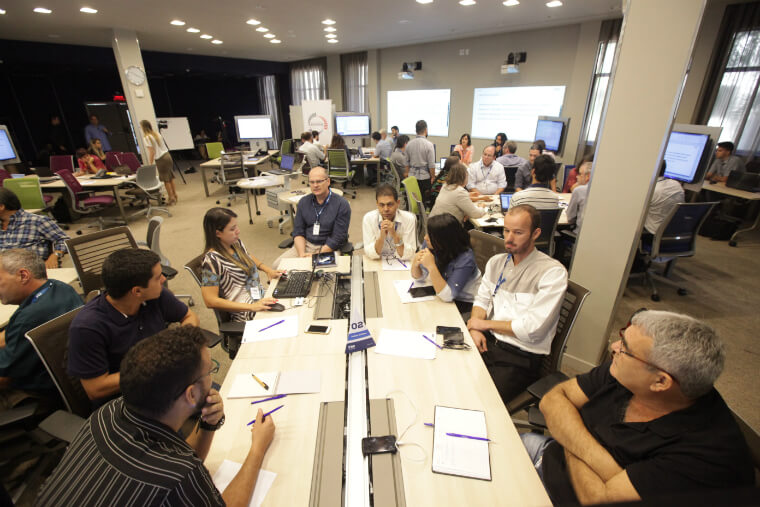Document will be submitted for review and approval by the competent environmental agencies
The first strategies that will be used for the management of the tailings deposited in the basin of Doce River after the collapse of the Fundão dam, were completed this Monday afternoon (03/13). Methods such as the division of the basin in stretches leveled by impact, consolidation of viable techniques for material removal and recovery procedures for the affected areas, are some of the results obtained during the workshop organized by the Renova Foundation.
The management plan maps the tailings removal techniques that can be used, such as excavation, dredging and manual removal in sensitive locations such as in the case of the Bento Rodrigues area, sub-district of Mariana (MG). Potential recovery models of the affected areas were also identified, such as the revegetation with grass, technique required for the subsequent planting of more robust species, and the conformation of the affected waterways.

Representatives of environmental agencies, experts and academics discuss the Tailings Management Plan. | Photo: Thiago Fernandes
On March 20, the waste management plan will be presented to the Brazilian Institute of Environment and Natural Renewable Resources (Ibama), the State Institute for the Environment and Water Resources of Espírito Santo (IEMA) and the State Department of Environment and Sustainable Development of Minas Gerais (Semad) for review and approval. Based on this management plan the action plan will be developed, which will coordinate the removal of the material deposited in the river and the recovery of the affected areas along the stretch between Mariana (MG) and mouth of the Doce River, in Linhares (ES). The environmental agencies are part of the Tailings Technical Board of the Inter-Federative Committee (CIF).
The importance of a joint development of the management plan, which brought together 80 professionals from about 30 institutions, of which six environmental agencies, five educational and research institutions and six specialized consultants, is the speed and efficiency it will bring to the removal and recovery actions. Once approved, the Renova Foundation can make use of all the methods described therein, without the need to have each stage approved separately by the competent bodies.
BALANCE
3 workshops
80 experts
30 participating institutions, among them academia, environmental agencies, consultancies
